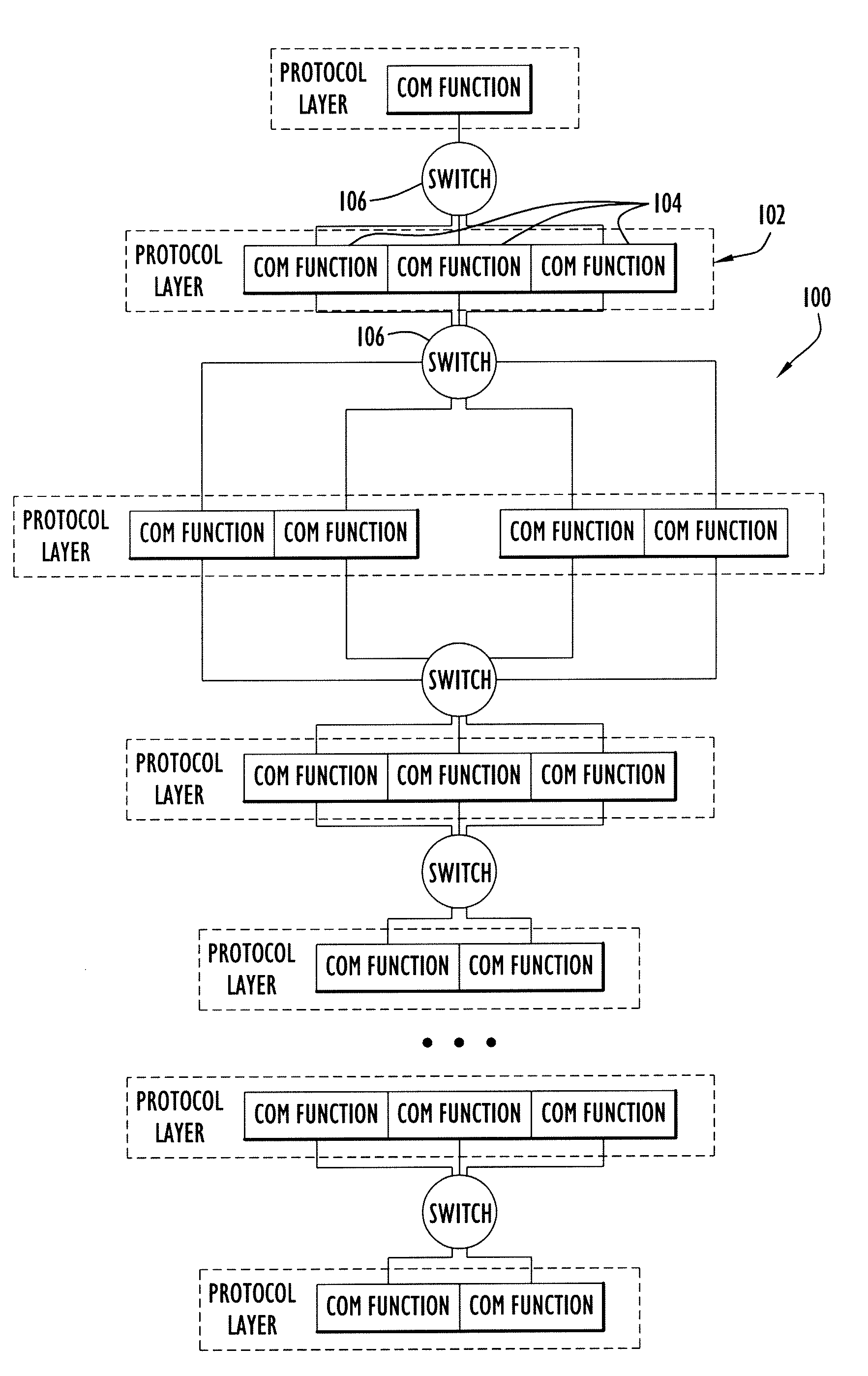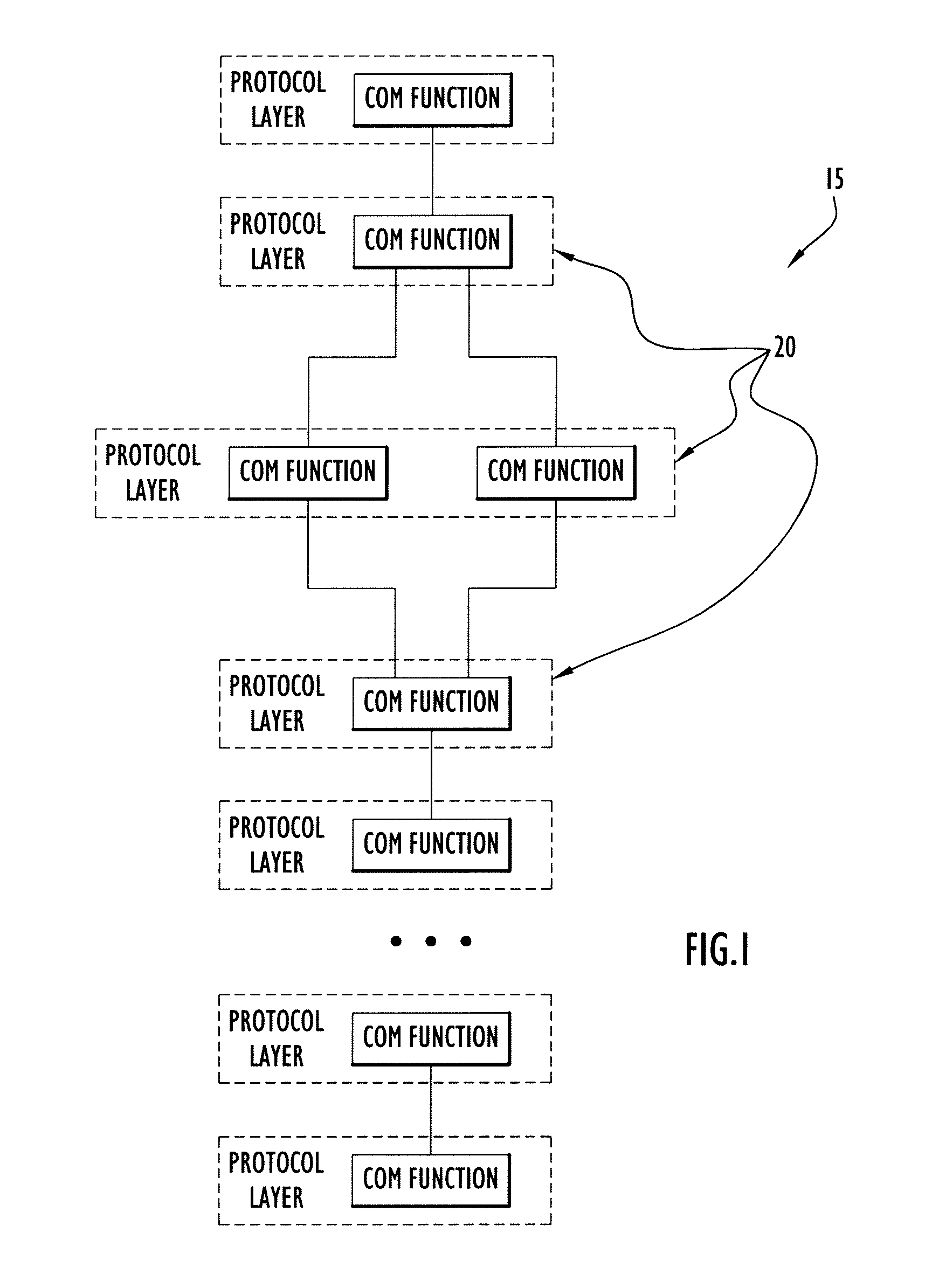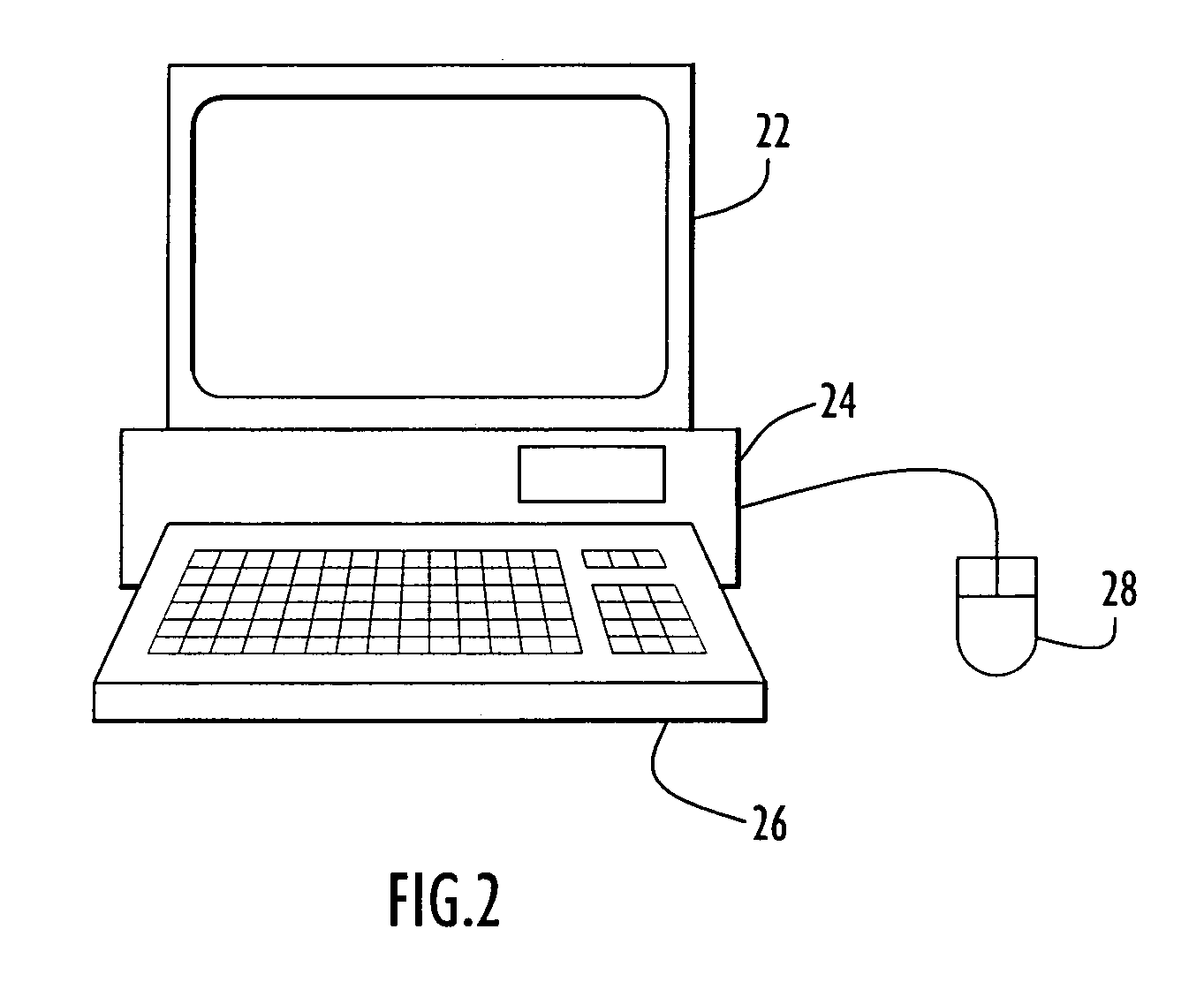Network modeling system and method of simulating network operation with configurable node models
a network modeling and node model technology, applied in data switching networks, instruments, analogue processes for specific applications, etc., can solve the problems of reducing the usefulness of developed models, affecting the cost of model development, and the task becomes extremely difficult to re-use or adapt node models, etc., to achieve fast execution speed, reduce granularity, and reduce the effect of complexity
- Summary
- Abstract
- Description
- Claims
- Application Information
AI Technical Summary
Benefits of technology
Problems solved by technology
Method used
Image
Examples
Embodiment Construction
[0027]A modeling architecture is employed by a network modeling and simulation system according to the present invention. The modeling architecture enables a modeler to develop network models with optimized software implementations that may be selected prior to or dynamically during a network simulation. The node model enables a user to perform network simulation or analysis of varying detail or granularity. The present invention node model may be utilized to support network modeling projects for various applications (e.g., military, commercial, etc.). By way of example only, the present invention is described with reference to the OPNET simulation environment available from OPNET Technologies, Inc. of Bethesda, Md. However, the present invention may be implemented with any suitable network simulation systems.
[0028]The network simulation system of the present invention is preferably implemented by a computer system or workstation as illustrated, by way of example only, in FIG. 2. Sp...
PUM
 Login to View More
Login to View More Abstract
Description
Claims
Application Information
 Login to View More
Login to View More - R&D
- Intellectual Property
- Life Sciences
- Materials
- Tech Scout
- Unparalleled Data Quality
- Higher Quality Content
- 60% Fewer Hallucinations
Browse by: Latest US Patents, China's latest patents, Technical Efficacy Thesaurus, Application Domain, Technology Topic, Popular Technical Reports.
© 2025 PatSnap. All rights reserved.Legal|Privacy policy|Modern Slavery Act Transparency Statement|Sitemap|About US| Contact US: help@patsnap.com



